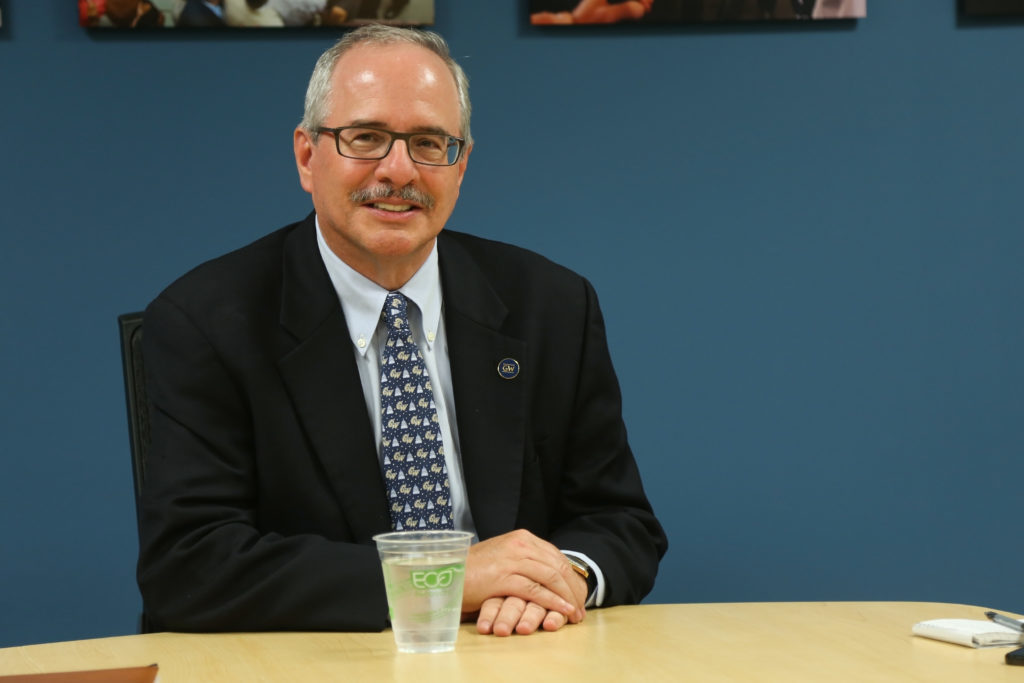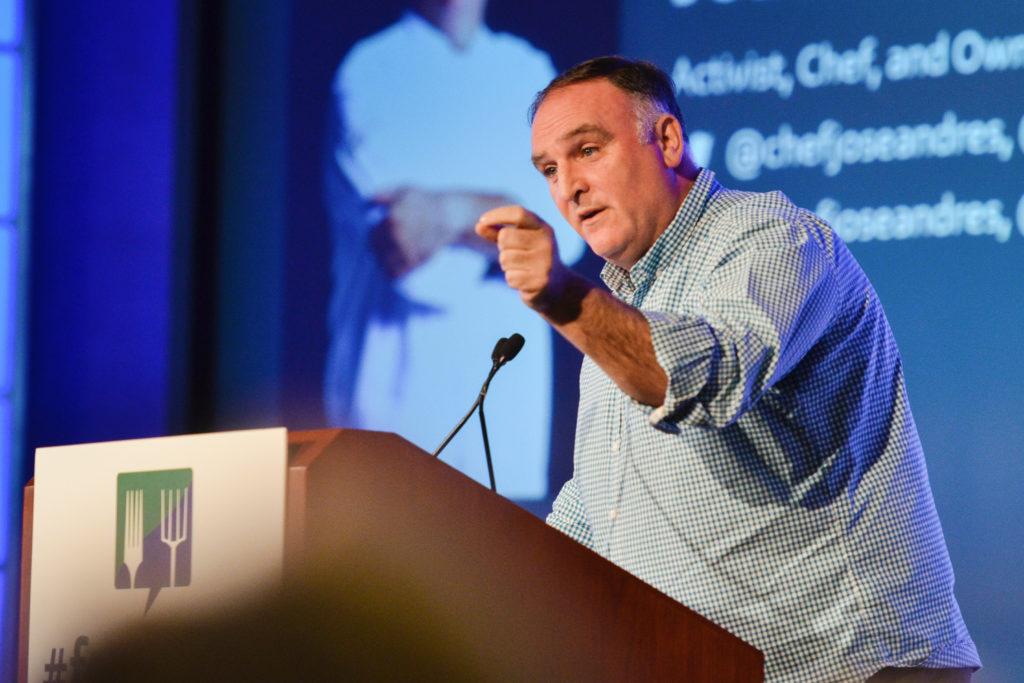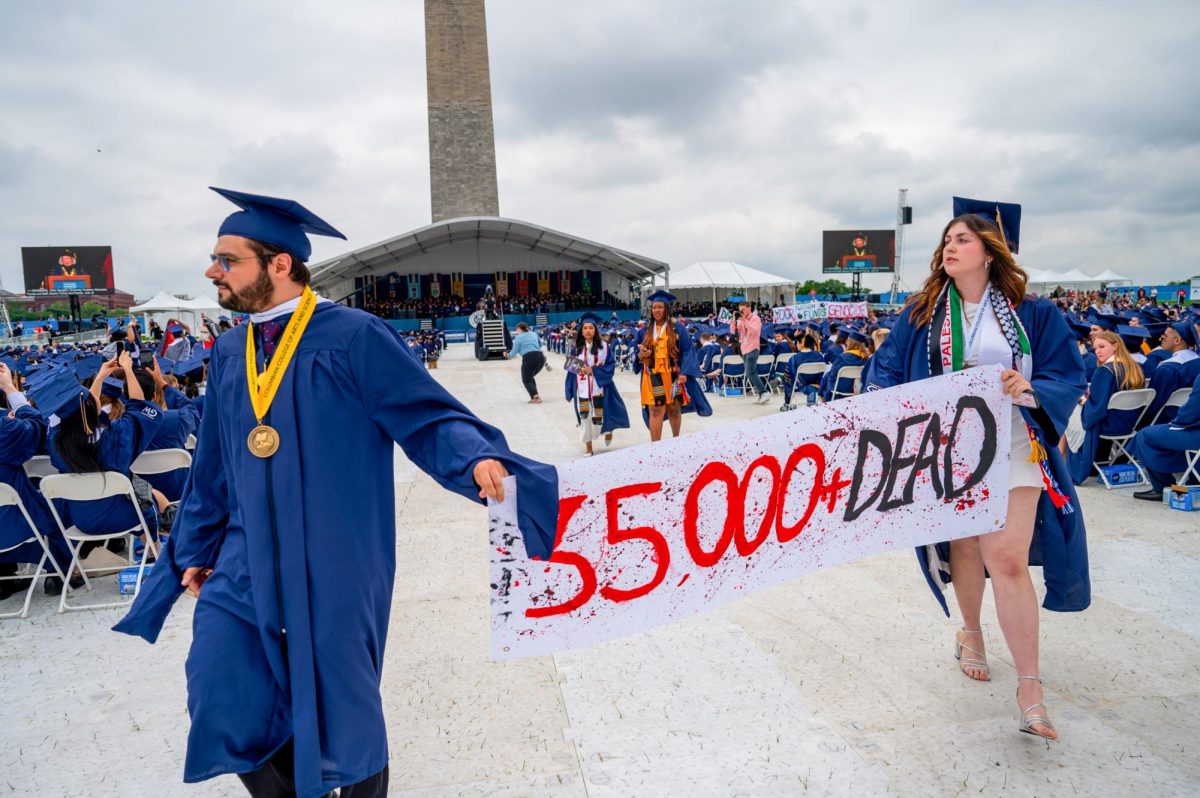Less than seven months before taking office, incoming University President Thomas LeBlanc said he sees several paths for the University to take for future growth.
In his first sit-down interview with The Hatchet since he was named GW’s next president in January, LeBlanc discussed potential points of focus for his presidency and the challenges unique to running a university in D.C. He said he wants students, faculty and staff to reflect on the University’s overall mission for the next decade and the different avenues GW could take on its way to becoming a stronger institution.
“There’s no cookie-cutter to this,” LeBlanc said. “I don’t come in with kind of a master template and you try to squeeze GW into some template that was designed for some other place.”
LeBlanc, the current provost and executive vice president at the University of Miami, was named the 17th president of GW last month and will officially assume the role in August. The announcement came about six months after the Board of Trustees began its search to replace University President Steven Knapp, who will be leaving his post at the end of this academic year.
To devise a long-term strategy, LeBlanc said he will take time to understand GW’s history and traditions along with the academic and career benefits that come with the University’s downtown D.C. location.
Finding GW’s niche
LeBlanc said GW and Miami have similar academic structures because of their access to major cities and, therefore, students’ demands for a variety of programs. Miami has 11 schools and colleges and GW has 10.
Where the two universities differ, he said, is mainly due to their settings. He cited the strength of Miami’s marine science program, which has grown because of the university’s proximity to the ocean. At GW, programs focused on public policy have flourished because of the University’s access to D.C. government and policy centers, he said.
“Here I think the combination of the academic offerings across this broad range – including policy – plus the location in D.C. tends to attract the kind of student that comes to GW,” he said. “And that’s what I’ve heard from the students themselves.”
LeBlanc said that he hopes to find the University’s niche, whether it be as the top university for educating government officials or incorporating internships into curricula. There are a variety ways GW could develop in the years to come, but LeBlanc’s calls won’t be rash, he said.
“Let’s take it 10 years from now, how would we like GW to be better or different?” LeBlanc said. “I think that’s important for us to talk about because we have a lot of options in almost every dimension. We really do have a lot of possibility.”
This isn’t LeBlanc’s first brush with GW: A decade ago, he was chair of the accreditation committee during the 2007-2008 academic year. University leaders are currently preparing to undergo the accreditation process again in 2018.
During that process, LeBlanc worked with now-Provost Forrest Maltzman, who was then serving as the co-chair of the accreditation team.
“They made it easy for us to do the work that we needed to do, to make the case that they need to be accredited,” LeBlanc said. “I developed respect for Forrest at that point and now he is the provost at GW. I feel like we have already established a relationship starting with that.”
Taking the whole pie
LeBlanc said his biggest challenge will be understanding GW’s resources, including financial resources, before setting goals.
“I met with one group and they were talking about how wonderful Miami is and then two minutes later they were saying ‘but here at GW we don’t have the money to do something,’” LeBlanc said. “And I said, ‘Here at GW you’ve got twice as much money as Miami does. I don’t understand why you’re saying that.’”
GW’s endowment, or financial foundation, totals $1.57 billion and funds items like scholarships, professorships, construction projects and includes investments in stocks, bonds, real estate and other financial assets. Miami’s endowment was $844.6 million this fiscal year.
As Miami’s provost, LeBlanc interviews individual faculty members about their work, recruits individual students to the University and works to approve and reject programs as the chief budget officer, he said. LeBlanc said he is ready to take on broader decision-making in his new role.
“After 12 years of saying ‘yes’ and ‘no,’ I’m ready to help with the strategy that grows the pie and let somebody else say ‘yes’ and ‘no’ on each slice,” he said.
Living the student experience
LeBlanc met Tuesday with a group of student leaders. He said the conversation focused on the impact of GW’s urban setting on the University’s dining system and the challenges of building a community on an urban campus.
One of the major differences between GW and Miami, where LeBlanc has spent the last 12 years, is that GW is fully integrated into the city and Miami is located in a suburb, he said. Although the city location offers certain advantages, it can also diminish the connection students, staff and faculty have with their campus, LeBlanc said.
“The downside is it pulls people away from campus,” he said. “What I’m hearing from students is it creates a more disconnected sense of community.”
LeBlanc said students and faculty have built community on Miami’s campus by connecting through the music school. Both institutions LeBlanc has worked for – Miami and the University of Rochester – boast well-regarded music schools.
“I believe that music can be an incredible vehicle for creating campus community because I’ve seen it in both of those places,” he said. “The question is how you create community around the arts when you don’t have a music school.”
GW does not have a music school and the music department’s budget was slashed by 40 percent in March 2015. The cuts restricted music classes to majors and minors and prompted protest concerts by student musicians.
LeBlanc said the University’s location makes GW’s dining situation unique from most other universities across the country, an issue student leaders have worked to solve. J Street, the only dining hall on the Foggy Bottom Campus, closed at the end of last academic year and students now spend dining dollars at restaurants on and near campus.
“In a traditional campus setting you have dining halls. Here, you’re smack in the middle of the city and you have restaurants – that’s a completely different experience,” he said. “I’m trying to really understand how that aspect of the campus experience affects the overall student experience.”
To prepare for the role in the months before he takes over, LeBlanc said that he will be coming to campus for two three-day periods between now and Aug. 1. He said he plans to meet with as many groups and people as possible during the visits.
LeBlanc said he would live in the F Street House where University President Steven Knapp has stayed during his decade-long tenure. He said living on campus would better connect him with the everyday experiences of the students he leads.
“I’ll be seeing students everyday. I’ll be eating at some of the same restaurants that you’re eating in,” he said. “I hope that through that process over time to experience the community, the University and the city in the way that students do, and from that, hopefully inform a strategy for the University as a whole.”





